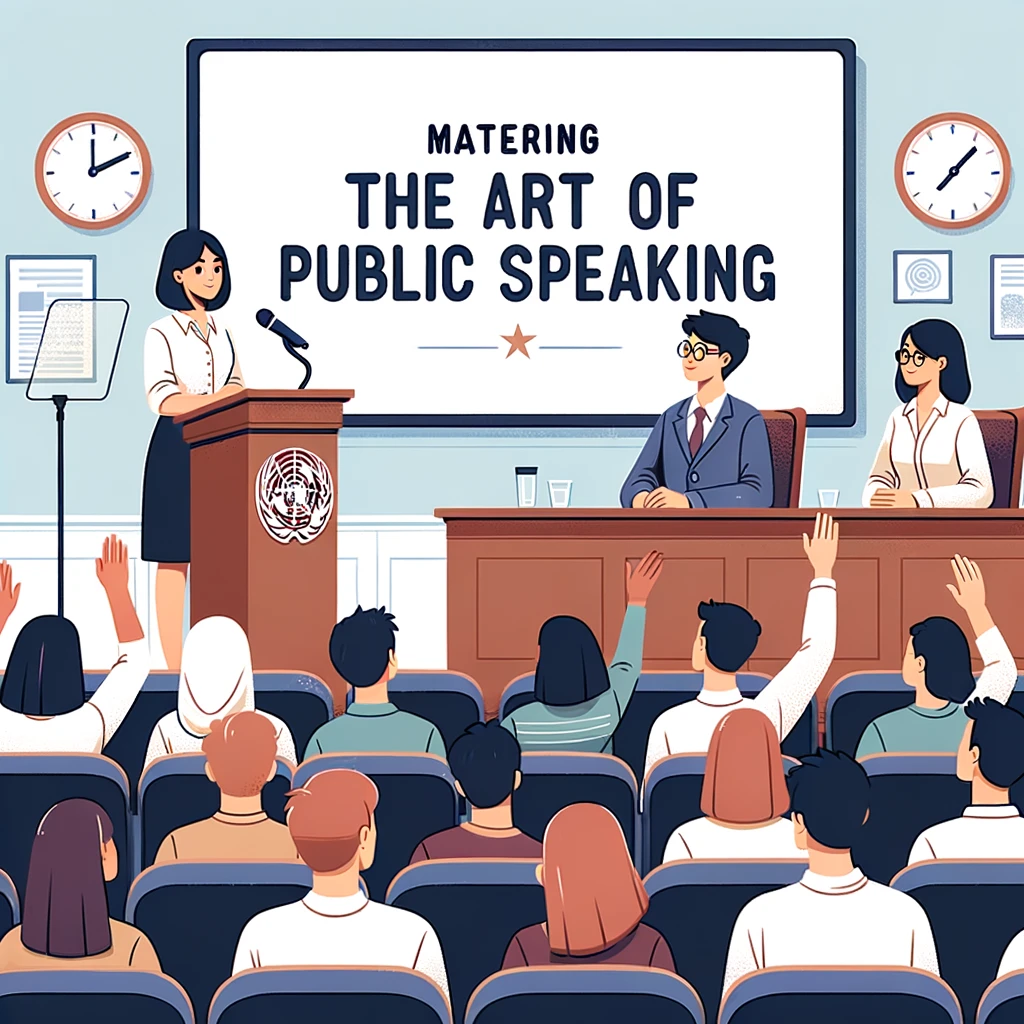
Mastering the Art of Public Speaking: 15 Essential Tips for Students, Teachers, and Researchers

Unlock the secrets to delivering a compelling and impactful speech. Whether you’re a student, teacher, or researcher, these 15 essential tips will guide you in mastering the art of public speaking.
Introduction
Public speaking is an invaluable skill that transcends professions and settings. Whether you’re a student presenting a project, a teacher leading a lecture, or a researcher sharing groundbreaking findings, the ability to deliver a compelling speech is crucial. This article outlines 15 key points that contribute to successful public speaking, tailored specifically for students, teachers, and researchers.
1. Self-Confidence: The Foundation of Effective Speaking
Why It Matters
Believing in yourself and your message is the cornerstone of any successful speech. A lack of confidence can be easily detected by your audience and can undermine your credibility.
How to Build Self-Confidence
- Practice your speech multiple times.
- Visualize a successful presentation.
- Use positive affirmations.
2. Proper Dress Sense: Making a Lasting First Impression
Why It Matters
First impressions are often formed within seconds, and your attire plays a significant role in this.
Dressing Tips
- Dress professionally and appropriately for the occasion.
- Pay attention to grooming and personal hygiene.
3. Inclusive Address: Engaging the Entire Audience
Why It Matters
Making eye contact and addressing different members of the audience keeps everyone engaged and makes them feel valued.
Techniques for Inclusion
- Scan the room and make eye contact with various individuals.
- Use open body language to invite engagement.
4. Subject Focus: Staying on Message
Why It Matters
Going off-topic can confuse your audience and dilute your main message.
Tips for Maintaining Focus
- Outline your speech beforehand.
- Stick to the key points that support your main message.
5. Problem-Solving Approach: Offering Solutions
Why It Matters
People are more likely to engage with your speech if you offer actionable solutions to problems.
How to Adopt a Problem-Solving Approach
- Identify the problem clearly.
- Present well-reasoned solutions.
6. Evidence-Based Refutation: Addressing Criticisms Professionally
Why It Matters
Addressing criticisms with evidence adds weight to your arguments and enhances your credibility.
How to Refute Criticisms
- Use verified data and facts.
- Avoid personal attacks and focus on the issue.
7. Showcasing Achievements: A Humble Brag
Why It Matters
Highlighting your accomplishments establishes your authority on the subject.
How to Showcase Achievements
- Use specific examples to illustrate your points.
- Maintain a humble tone to avoid sounding arrogant.
8. Authenticity: Speaking from the Heart
Why It Matters
Authenticity helps you connect with your audience on a deeper level.
How to Be Authentic
- Share personal stories and experiences.
- Be yourself and let your personality shine through.
9. Humanity First: Being Compassionate and Respectful
Why It Matters
Remembering that your audience is made up of individuals with their own stories fosters a respectful and compassionate environment.
How to Prioritize Humanity
- Use inclusive language.
- Show empathy and understanding.
10. Optimism: Inspiring Hope for the Future
Why It Matters
A positive outlook can inspire your audience and give them something to look forward to.
How to Be Optimistic
- Use uplifting language.
- Share success stories that offer hope.
11. Leading by Example: Being a Role Model
Why It Matters
Sharing your own experiences makes you relatable and adds credibility to your speech.
How to Lead by Example
- Discuss challenges you’ve overcome.
- Share lessons you’ve learned along the way.
12. Data-Driven Attacks: Critiquing with Facts
Why It Matters
If you must critique or attack an opponent’s viewpoint, doing so with data and facts lends credibility to your arguments.
How to Attack with Data
- Use verified statistics and studies.
- Stick to the facts and avoid personal jabs.
13. Commanding Presence: Maintaining High Stature
Why It Matters
Your body language speaks volumes and can either enhance or undermine your message.
How to Maintain High Stature
- Stand up straight.
- Use confident and assertive body language.
14. Equal Treatment: Avoiding Stereotypes and Generalizations
Why It Matters
Treating everyone with respect, regardless of their background, is essential for effective communication.
How to Ensure Equal Treatment
- Use inclusive language.
- Be mindful of cultural sensitivities.
15. Giving Credit: Acknowledging Contributions
Why It Matters
Acknowledging the contributions of others shows that you are humble and appreciative.
How to Give Credit
- Mention people by name.
- Thank them for their contributions.
Conclusion
Mastering the art of public speaking is a journey that requires practice, self-awareness, and a deep understanding of your audience. By following these 15 essential tips, you’ll be well on your way to delivering speeches that not only inform but also inspire and engage your audience of students, teachers, and researchers.
By adhering to these guidelines, you can elevate your public speaking skills to new heights, making a lasting impact on your audience.